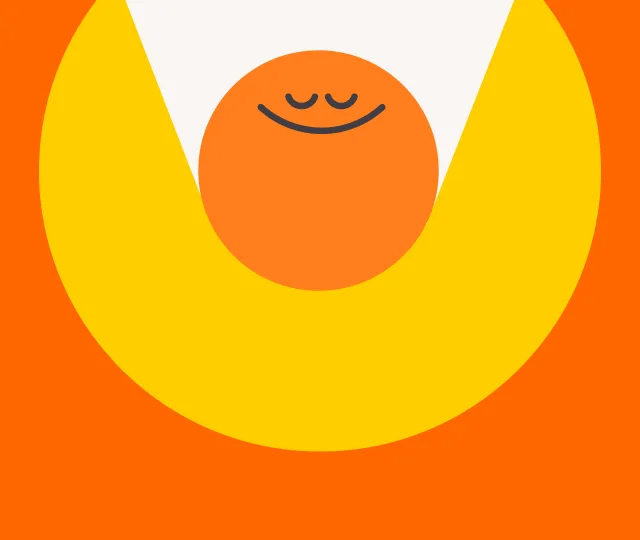16 Types of Meditation Techniques and Practices
Researched and written by our mindfulness and meditation experts | Learn more
Sep 11, 2023
Experienced meditators agree: a daily meditation practice can have significant benefits for mental and physical health. But one thing they probably won’t agree on? The most effective types of meditation. That’s simply because it’s different for everyone. After all, there are literally hundreds of meditation techniques encompassing practices from different traditions, cultures, spiritual disciplines, and religions. There’s not a universally accepted “best” or “most effective” type; rather, it is our individual preference that helps us choose the one (or ones) that works best for us. Here’s a breakdown of some of the more popular types of meditation to get you started.
How guided meditation works
How guided meditation works
1 min
Guided vs. unguided meditation
Choosing between guided and unguided meditation is often the first step in starting a meditation practice. In guided meditation, a teacher guides you through the basic steps of the practice, either in person or via a meditation app like Headspace. This type of meditation is particularly useful for beginners because the teacher is experienced and trusted, and their guidance can be key to helping those who are new to the practice get the most out of the experience. Most guided meditations follow a similar format: the teacher explains how the mind behaves during meditation, leads you through a particular meditation technique, and then suggests how to integrate this technique into your everyday life.
In unguided meditation — also called silent meditation — you meditate alone, without someone else explaining the process. For some people, unguided meditation involves simply sitting in quiet and paying attention to the body and thoughts for a set period of time. For others, it involves using some of the techniques they’ve learned from previous guided practices (see below).
Calming vs. insight meditation
Meditation techniques are often described as being either calming or insight meditation. The intention of calming meditation is to cultivate a quieter, more peaceful state of mind and improved concentration. Most calming meditation practices involve focusing on a particular object — your breath, a mantra, a visualization, a physical object, even physical sensations within your body — and returning to that object whenever you get distracted or notice your mind starting to wander.
Alternatively, people who practice insight meditation often set an intention to transform their minds by developing qualities such as wisdom and compassion. Insight meditation involves focusing on the breath and being aware of and noting all the physical and mental sensations that arise.
Here’s the interesting thing about meditation: it doesn’t have to be one or the other, calming or insight. In fact, many meditation techniques — including the ones in the Headspace app — actually combine elements of both. In addition to helping us find calmness and mental quiet, these meditations also help improve feelings of well-being, happiness, and empathy for others.
Types of meditation used in the Headspace app
The techniques in the Headspace app stem from both the Burmese and Tibetan Buddhist traditions, even though some of the names have been changed from the original translation to make them more accessible. Currently, there are eight core techniques, combining elements of both insight (vipassana) and calming (samatha) meditations in most of the 10- or 30-day courses.
There are many definitions of meditation, but at Headspace, it is defined as a formal exercise to cultivate compassion and awareness, with these qualities being seen as the foundation to a healthy and happy life. It is through the practice of the specific techniques listed below that we build stability of mind over time.
- Focused attention.
This form of meditation is fairly straightforward because it uses the object of our breath to focus attention, to anchor the mind and maintain awareness. Notice your mind starting to wander? Simply return to the breath.
- Body scan.
Often, our body is doing one thing while our mind is elsewhere. This technique is designed to sync body and mind by performing a mental scan, from the top of the head to the end of your toes. Imagine a photocopier light slowly moving over your body, bringing attention to any discomfort, sensations, tensions, or aches that exist.
- Noting.
Whether you are focusing on the breath or simply sitting in quiet, this technique involves specifically “noting” what’s distracting the mind, to the extent that we are so caught up in a thought or emotion that we’ve lost our awareness of the breath (or whatever the object of focus is). We “note” the thought or feeling to restore awareness, create a bit of space, as a way of letting go, and to learn more about our thought patterns, tendencies, and conditioning.
- Visualization.
This type of meditation invites you to picture something or someone in your mind — we are essentially replacing the breath with a mental image as the object of focus. It can feel challenging to some, but it’s really no different than vividly recalling the face of an old friend naturally, without effort. And so it is with meditation. By conjuring a specific visualization, we not only get to observe the mind, but we also get to focus on any physical sensations.
- Loving kindness.
Focusing on the image of different people — it doesn’t matter if we know them or not, if we like them or not — is integral to this technique. We direct positive energy and goodwill first to ourselves, and then, as a ripple effect, to others, which helps us let go of unhappy feelings we may be experiencing. Below is a video with more instruction on how to use the loving kindness meditation technique.
- Skillful compassion.
Similar to the loving kindness meditation technique, this one involves focusing on a person you know or love and paying attention to the sensations arising from the heart. By opening our hearts and minds for the benefit of other people, we have the opportunity to foster a feeling of happiness in our own mind.
- Resting awareness.
Rather than focusing on the breath or a visualization, this technique involves letting the mind truly rest; thoughts may enter, but instead of distracting you and pulling you away from the present moment, they simply drift away.
- Reflection.
This technique invites you to ask yourself a question: perhaps something such as, “What are you most grateful for?” (Note that asking yourself a question using the second person — you — will discourage the intellectual mind from trying to answer it rationally.) Be aware of the feelings, not the thoughts, that arise when you focus on the question.
How Loving Kindness meditation helps you to be nicer to yourself and others
How Loving Kindness meditation helps you to be nicer to yourself and others
2 min
Some other types of meditation
The above list of meditation styles is far from exhaustive. Here are some other forms of this ancient practice that you may want to explore. (Note: Many of the following techniques should be learned with an experienced — and in some cases certified — teacher to be most effective.)
- Zen meditation.
This ancient Buddhist tradition involves sitting upright and following the breath, particularly the way it moves in and out of the belly, and letting the mind “just be.” Its aim is to foster a sense of presence and alertness.
- Mantra meditation.
This technique is similar to focused attention meditation, although instead of focusing on the breath to quiet the mind, you focus on a mantra (which could be a syllable, word, or phrase). The idea here is that the subtle vibrations associated with the repeated mantra can encourage positive change — maybe a boost in self-confidence or increased compassion for others — and help you enter an even deeper state of meditation.
The meditation techniques and exercises in the Headspace app are not the Transcendental Meditation® (TM®) program, nor is the Headspace app endorsed by Maharishi Foundation USA, Inc., which teaches the Transcendental Meditation program. If you are interested in the Transcendental Meditation® (TM®) program you can visit the Maharishi Foundation’s website. The Transcendental Meditation® program is taught one-on-one by instructors trained and licensed by Maharishi Foundation in a personalized and individual manner. The practice involves sitting comfortably with one’s eyes closed for 20 minutes twice per day and engaging in the effortless practice as instructed. Students are encouraged to practice twice a day, which often includes morning meditation, and the a second session is in the mid-afternoon or early evening.
Just as there are many different types of meditation, so too exist many styles of yoga — particularly Kundalini yoga — that are aimed at strengthening the nervous system, so we are better able to cope with everyday stress and problems. However, in order to integrate the neuromuscular changes that happen during yoga and gain the greatest benefit from the practice, we must take time for savasana or Shavasana, known as corpse or relaxation pose, to relax the body and relieve tension.
Another ancient tradition, this one invites you to use your concentration to intensely examine certain aspects of your existence with the intention of eventual transformation. Vipassana pushes us to find "insight into the true nature of reality," via contemplation of several key areas of human existence: "suffering, unsatisfactoriness,” “impermanence,” “non-self,” and "emptiness."
- Chakra meditation.
This meditation technique is aimed at keeping the body’s core chakras — centers of energy — open, aligned, and fluid. Blocked or imbalanced chakras can result in uncomfortable physical and mental symptoms, but chakra meditation can help to bring all of them back into balance.
- Qigong meditation.
This is an ancient and powerful Chinese practice that involves harnessing energy in the body by allowing energy pathways — called “meridians” — to be open and fluid. Sending this energy inward during meditation is thought to help the body heal and function; sending the energy outward can help to heal another person.
This form uses bowls, gongs, and other instruments to create sound vibrations that help focus the mind and bring it into a more relaxed state.
Did one or more of these meditation techniques speak to you? Remember, ultimately it doesn’t matter which technique you choose. What does matter, however, is that you choose a style that allows you to integrate the qualities you experience during meditation practice — calm, empathy, mindfulness — into the rest of your day.
If you’re looking for an introduction to different types of meditation, check out the 10-day beginner’s course on the essentials of meditation — available for free in the Headspace app. From there, once you gain more experience and confidence, you can explore the whole library of content, covering everything from sleep, compassion, and sports to anger, stress, focus, and more. Get started today!


Be kind to your mind
- Access the full library of 500+ meditations on everything from stress, to resilience, to compassion
- Put your mind to bed with sleep sounds, music, and wind-down exercises
- Make mindfulness a part of your daily routine with tension-releasing workouts, relaxing yoga, Focus music playlists, and more
Annual - billed at $69.99 USD/yr
14 days free
$5.83 USD/month
Monthly
7 days free
$12.99 USD/month

Learn more about meditation

Stay in the loop
Be the first to get updates on our latest content, special offers, and new features.
By signing up, you’re agreeing to receive marketing emails from Headspace. You can unsubscribe at any time. For more details, check out our Privacy Policy.
- © 2025 Headspace Inc.
- Terms & conditions
- Privacy policy
- Consumer Health Data
- Your privacy choices
- CA Privacy Notice






